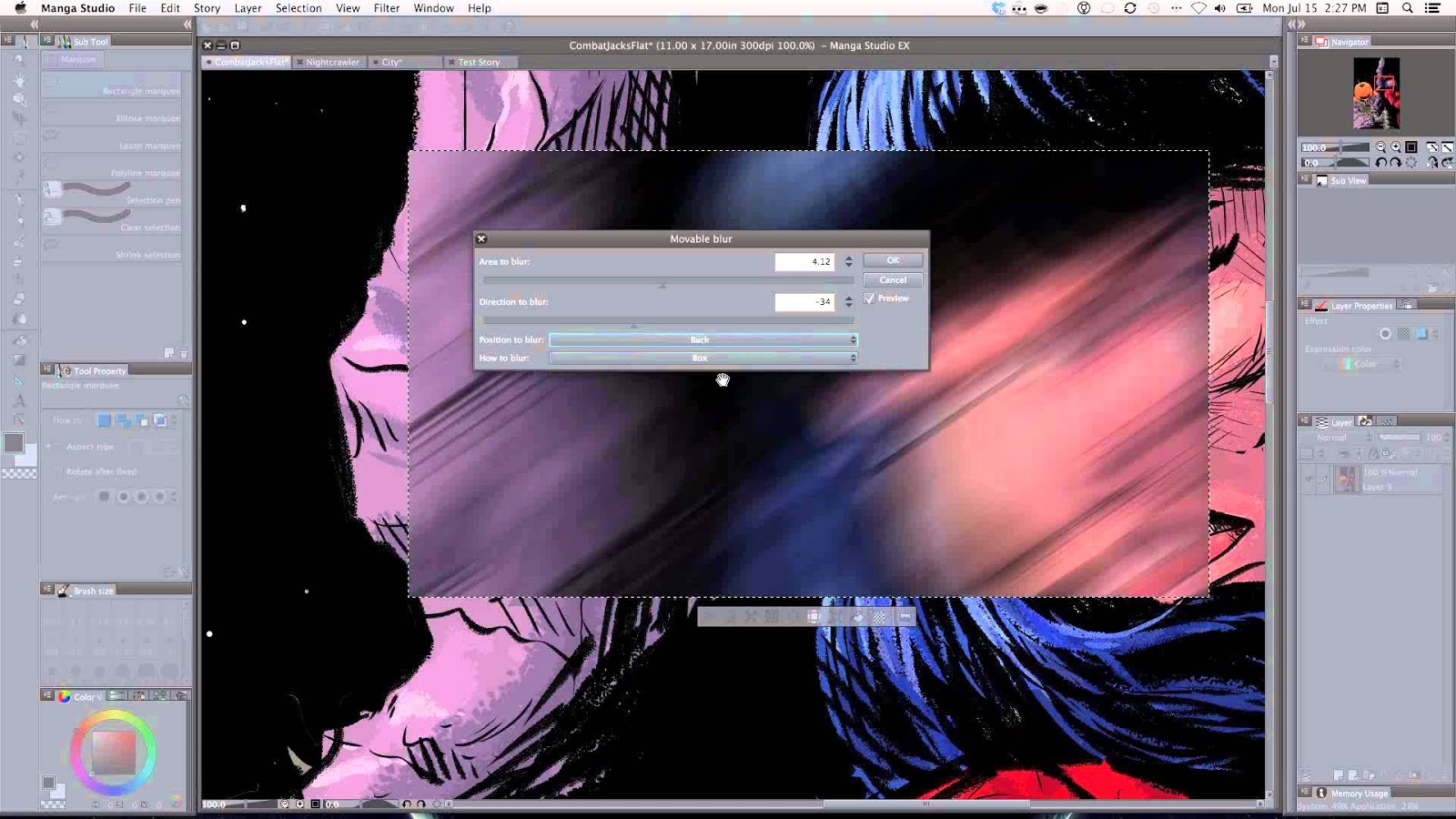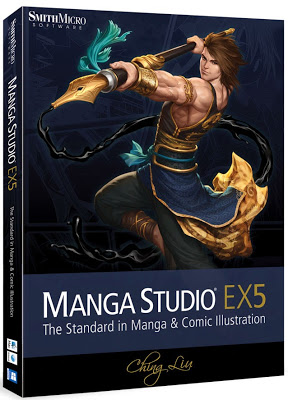
I also had a lot of fun with exploring the various tones and effects that can be easily inserted into the drawings with the help of the magic wand tool, however use of these two features was a bit of a mixed bag. I came up with this idea in about 5 seconds. Once you are happy with your inks and outlines, the sketches can either be manually erased or cleared all at once without affecting any of your inks. Which reminds me, although this probably goes without saying, use of a graphics tablet is pretty much compulsory if you want to have any success in controlling how soft or hard the brush strokes are laid out, how accurate your drawings are etc. Speaking of inking, a variety of brush and pen shapes can be used (the same goes for sketching), with the thickness easily adjustable, and options for how drastically the thickness changes in response to how hard you are pressing on your stylus. I liked to use a dull blue tone for my sketch colors so that I wouldn’t get confused when inking over the top of them later. The “Sketch” menu allows you to lay down the ground work of your designs.

A huge variety of panel numbers and shapes can be dragged across and placed on the page with ease, and further panels can be manually added wherever you desire by drawing connecting lines across existing panels. On the right hand side of the screen is a window full of tabs which contain just about everything you need to start creating. Thanks to the very simple beginner’s instructions that were followed with a more detailed “how to” explanation of each of the functions, the “Getting Started” guide easily allowed me to get right in to crafting my own comic masterpieces (I use the phrase “masterpiece” loosely because I am in no way a competent artist, as is evident by the various examples of my work on this very page). My attempt at playing around with colors and tones. After spending a few minutes screwing around and not having any clue where to begin, I went straight to the “Help” menu, where I was redirected to a page on the Smith Micro website that contained downloadable PDF manuals. Having said that, upon first firing up the program I was somewhat bombarded with everything that appeared on-screen.


Thankfully, this was not the case.ĭiffering from the Ex version, the Debut version of Manga Studio 4 is designed for beginners such as myself, hence the relatively cheap price tag. The reason I hadn’t previously purchased this program was that I have never used anything like this before besides Photoshop, and was afraid my noob status would result in me wasting my money on yet another application that boggles my mind and leaves me huddled and crying in the corner. Being a piece of software that I had been meaning to try out for a while, I jumped at the chance to have a hands on review of Smith Micro Software’s Manga Studio Debut 4.


 0 kommentar(er)
0 kommentar(er)
